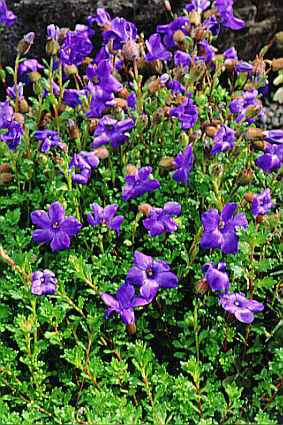Size
Ultimate height
Up to 10cmTime to ultimate height
2–5 yearsUltimate spread
0.1–0.5 metresGrowing conditions
Moisture
Moist but well–drainedpH
Acid, NeutralColour & scent
| Stem | Flower | Foliage | Fruit | |
| Spring | Green | |||
|---|---|---|---|---|
| Summer | Blue | Green | ||
| Autumn | Green | |||
| Winter |
Position
- Partial shade
Aspect
West–facing or East–facing
Exposure
Exposed or Sheltered Hardiness
H5Botanical details
- Family
- Campanulaceae
- Native to GB / Ireland
- No
- Foliage
- Deciduous
- Habit
- Matforming
- Genus
Cyananthus are mat-forming herbaceous perennials with small, entire or lobed leaves and solitary, terminal blue, purple, yellow or white flowers which are funnel-shaped with 5 spreading rounded lobes
- Name status
Unresolved
- Plant range
- India, Himalaya to China and N Myanmar
How to grow
Cultivation
Grow in poor to moderately fertile, humus-rich, moist but well-drained, preferably neutral to slightly acid soil in partial shade. Or grow in pots in an alpine house; keep plants cool and shaded
Propagation
Propagate by seed sown as soon as it is ripe in pots in an open frame. Propagate by rooting softwood cuttings in late spring or early summer
Suggested planting locations and garden types
- Gravel garden
- Patio and container plants
- Rock garden
Pruning
No pruning required
Pests
May be susceptible to glasshouse red spider mite and aphids
Diseases
Generally disease-free
Love gardening
Sign up to receive regular gardening tips, inspiration, offers and more
View our Privacy Policy
Get involved
The Royal Horticultural Society is the UK’s leading gardening charity. We aim to enrich everyone’s life through plants, and make the UK a greener and more beautiful place.
